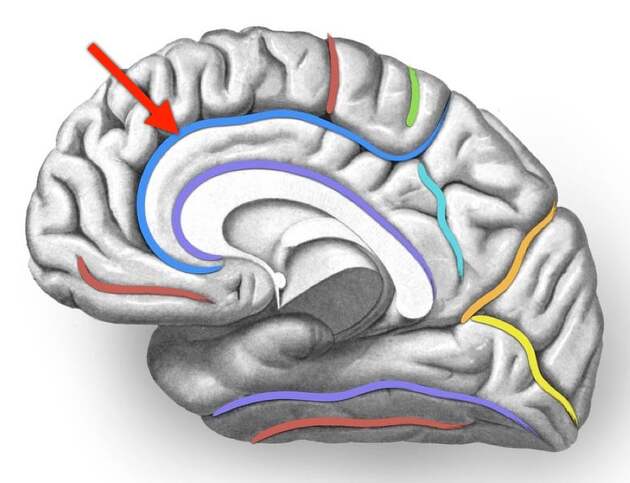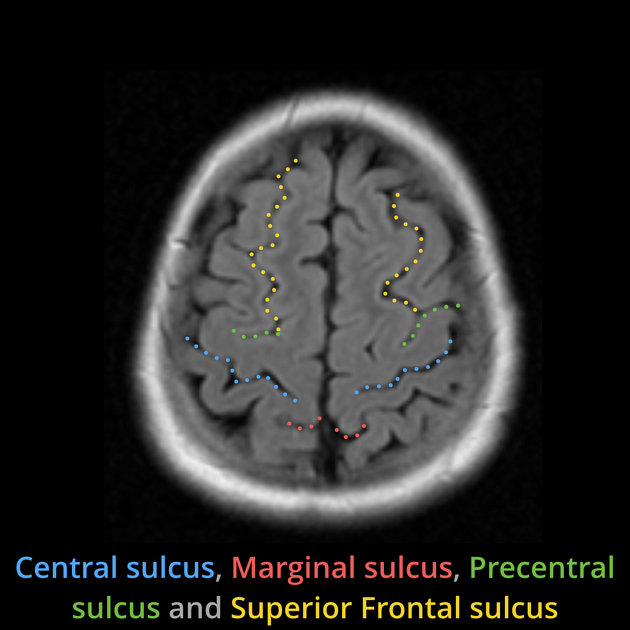Cerebral sulci and fissures are grooves between the adjacent gyri on the surface of the cerebral hemispheres. By allowing the cortex to invaginate to form sulci and gyri the surface area of the cortex is increased threefold 4. The result is that the surface area of the human cortex is 2200 cm2, only a third of which can be seen on the surface 4.
Gyri and sulci vary slightly in their dimensions and morphology between individuals or even between hemispheres. Some may not be present in a number of individuals and others deep enough to produce elevations on the surface of the ventricles (e.g. collateral sulcus, calcarine sulcus/calcar avis) 4. However, these variations are generally of no functional significance. In contrast, disorders of cortical formation can be associated with numerous and significant neurological symptoms and deficits.
On this page:
Embryology
Sulci develop at the end of the 3rd fetal month 1.
Classification
Sulci can be divided on the basis of function 3:
- limiting sulcus: some sulci develop between areas differing in structure and function (e.g. central sulcus)
- axial sulcus: some sulci develop along the axis of a rapidly growing/developing area (e.g. calcarine sulcus)
- operculated sulcus: a sulcus may be between two structurally different areas and a third sulcus may lie in its wall and does not appear on the surface (e.g. lunate sulcus)
On the basis of formation 3:
- primary sulcus: formed before birth (e.g. central sulcus)
- secondary sulcus: sulci formed within others due to the continued growth of adjoining areas of the cortex (e.g. the splenium of the corpus callosum conveys a large number of fibers from the temporal and occipital cortices to the parietal-occipital sulcus creating a number of axial and limiting sulci within the wall of the parieto-occipital sulcus)
On the basis of continuity (whether the sulci are broken into segments by gyral bridges crossing them) 2:
- commonly continuous or uninterrupted (e.g. lateral sulcus, which results from the relatively slow growth of the insular cortex and the submersion of the adjoining frontal, parietal and temporal areas)
- those that have low interruption rates (e.g. central, collateral and calcarine sulci)
- those that are regularly interrupted (e.g. postcentral, superior and inferior frontal sulci)
History and etymology
- sulcus (Latin: furrow, groove)
- fissure (Latin: cleft, groove)






 Unable to process the form. Check for errors and try again.
Unable to process the form. Check for errors and try again.